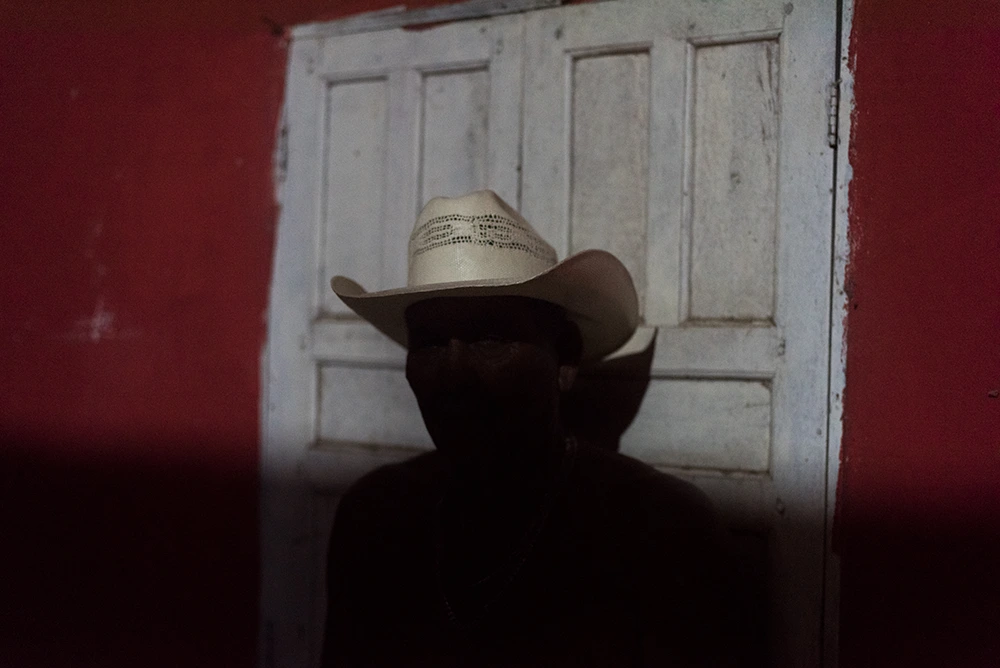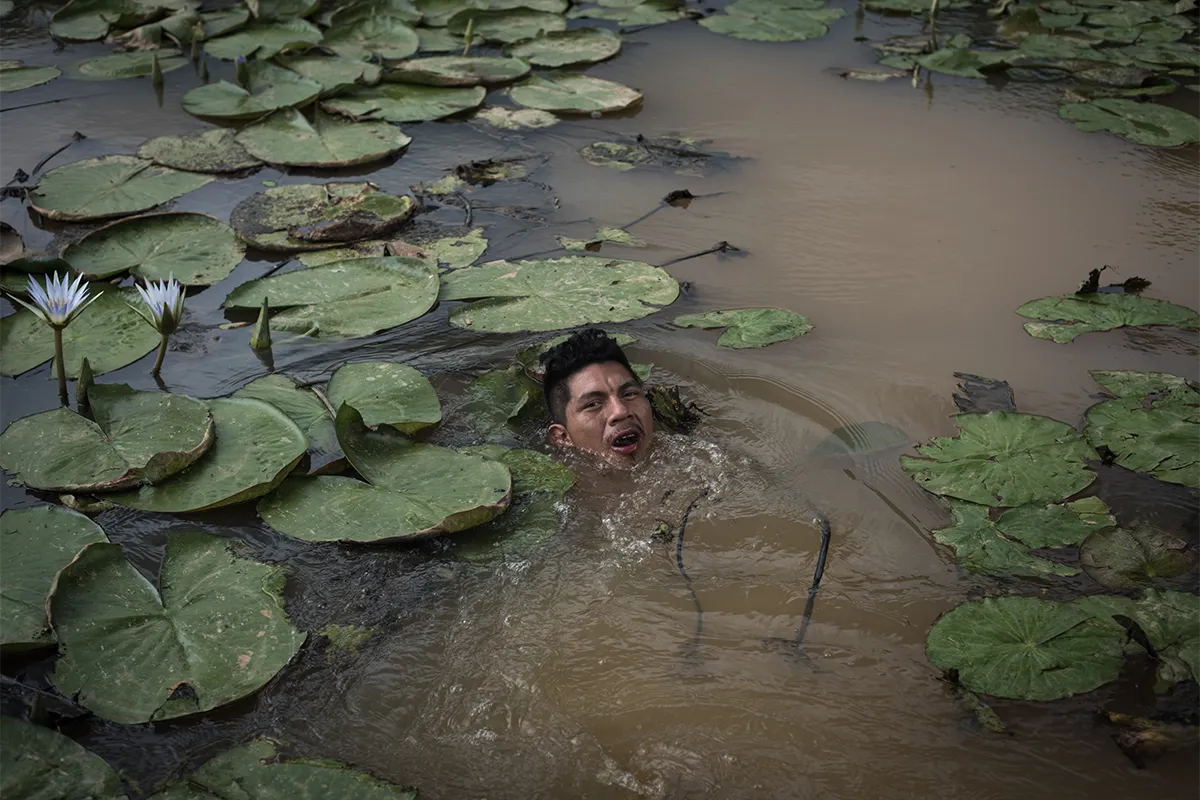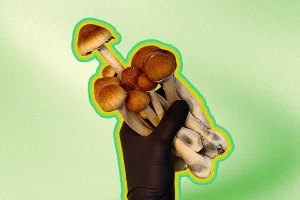When Jair Bolsonaro was elected president of Brazil in 2018, photographer Leonardo Carrato knew his country was entering an era of nationalism. That worried him. Carrato was unable to understand why so many people backed Bolsonaro, a Donald Trump-like political figure whose iron-fist approach seemed like bad déjà vu in a country that was under a dictatorship for decades last century.
Then, he started to notice all the military statues—statues that have always been there. And the roads, bridges, and highways that don the names of leaders from a period of military rule. Carrato started investigating that dark time from his country’s past to understand the present zeitgeist, and as he did, he learned something troubling: His government ran a “reformatory” project that was part prison, part government re-education initiative from 1969 into the late 70s—and it targeted Indigenous people and their traditions.
Ruins from reformatory complexes still rise among the green flora encircling the cities of Resplendor and Carmésia, in the state of Minas Gerais. Resplendor had long been home to the Krenak, a small Indigenous community settled along the Doce River that numbers in the hundreds, and the reformatory built there is known as the Krenak Reformatory. But despite being named after them, it neither belonged to them, nor was for them. The military dictatorship sent Indigenous people from at least 11 other states to the reformatories in both cities to be “civilized,” Carrato says.

“The military had this idea of economic progress,” Carrato says. “They wanted to build highways, railways—they wanted to connect the country, and do hydroelectric plants and all that. And these constructions, they specifically (were) going to invade Indigenous territories, all over the country. So the Indigenous, of course, they were resistant.”
The photographer visited the cities to learn more about the descendants from that period. At first, he went to Carmésia, and he did so without a camera. He connected with a leader from another targeted people, the Pataxó, who introduced him to others. He wanted to hear their stories first. He recorded their conversations, and in the process compiled a wealth of their memories.
Carrato has now been taking photographs of the people living in Resplendor and Carmésia—some of whom reside in the ruins themselves—since 2019. He made research of the area as much a priority as the photos themselves. He sometimes spent nights in the prison-like structures to grasp their energy.
How to Grow Shrooms Bundle
Take Both of Our Courses and Save $90!
The photos feel generally loomed over by the specter of that era. But they also capture a new generation of residents that are fortifying their Indigenous identity, resilient amidst the broken architecture of the decaying prisons and what it says about what happened in Minas Gerais.
READ: Wangechi Mutu: Between Palimpsest and Prayer

“I don’t know if I can say they were victims, or survivors,” he says. “They were people who experienced this period of time.”
Bolsonaro’s presidency will end in December. He was defeated in this year’s presidential election by Luiz Inácio Lula da Silva, a Leftist politician whose narrow victory suggests the zeitgeist behind Bolsonaro wasn’t insurmountable.
But for Carrato, the meaning of his work still stands. Taking photos of people among the ruins he says, is a reminder for the present moment about how easily Brazil targeted its own in the past. “I’m not sure if this is the main reason, but maybe this is one of the reasons we still have disconnected memory,” he says. “I’m still trying to figure it out.”
READ: Native Tribes Should Have More Say In the Psychedelic Movement


*This article was originally published in DoubleBlind Issue 9, published in June 2023.

DoubleBlind is a trusted resource for news, evidence-based education, and reporting on psychedelics. We work with leading medical professionals, scientific researchers, journalists, mycologists, indigenous stewards, and cultural pioneers. Read about our editorial policy and fact-checking process here.

DoubleBlind Magazine does not encourage or condone any illegal activities, including but not limited to the use of illegal substances. We do not provide mental health, clinical, or medical services. We are not a substitute for medical, psychological, or psychiatric diagnosis, treatment, or advice. If you are in a crisis or if you or any other person may be in danger or experiencing a mental health emergency, immediately call 911 or your local emergency resources. If you are considering suicide, please call 988 to connect with the National Suicide Prevention Lifeline.





